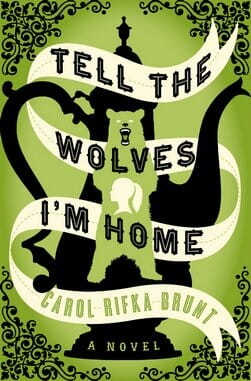Tell the Wolves I’m Home by Carol Rifka Brunt
Love, by any other name

The Greek language includes multiple words for love. Agape means spiritual love. Physical desire, eros. Philia means friendship. Storge can be described as familial love.
In English, the single word—love—umbrellas all these emotional varietals, these subspecies. Without so many fine distinctions, is it surprising that 14-year-old June Elbus’s first feelings of love leave her mixed up?
In Tell the Wolves I’m Home, first-time novelist Carol Rifka Brunt movingly portrays an adolescent girl’s struggle to comprehend love in a time and a culture under strain as it comes to terms with a complicated disease.
Fourteen-year-old June Elbus feels closer to her uncle Finn than anyone else on earth. A former best friend, Beans, has moved on. June constantly battles with her older sister, Greta. But Finn understands June. A renowned artist, he teaches her how to sketch, takes her to the Cloisters and introduces her to Mozart’s Requiem.
June’s love for Finn will not die. Finn, on the other hand, will. It’s 1987, and he has AIDS.
In the final months of his life, Finn spends Sunday afternoons painting a portrait of June and Greta. He gives the sisters an excuse to spend time together and with him—even though the girls’ mother, Finn’s sister, disapproves of her brother’s homosexuality. She worries about whether the girls could catch AIDS from something as innocent as using their uncle’s lip balm.
Finn titles the portrait “Tell the Wolves I’m Home,” an allusion to June’s escapes to the woods behind her school where she finds solace among nature and the wolves she believes she hears in the distance. Perhaps the portrait’s name also alludes to the peace Finn finds in art—and the relief from illness that presages death.
After Finn’s death, June sorts out her complicated feelings for her uncle alone, until Finn’s boyfriend Toby delivers a package. June had not met Toby previously. His package includes a note from Finn, a sort of final wish.
-

-

-

-

-

-

-

-

-

-

-

-

-

-

-

-

-

-

-

-

-

-

-

-

-

-

-

-

-

-

-

-

-

-

-

-

-

-

-

-








































